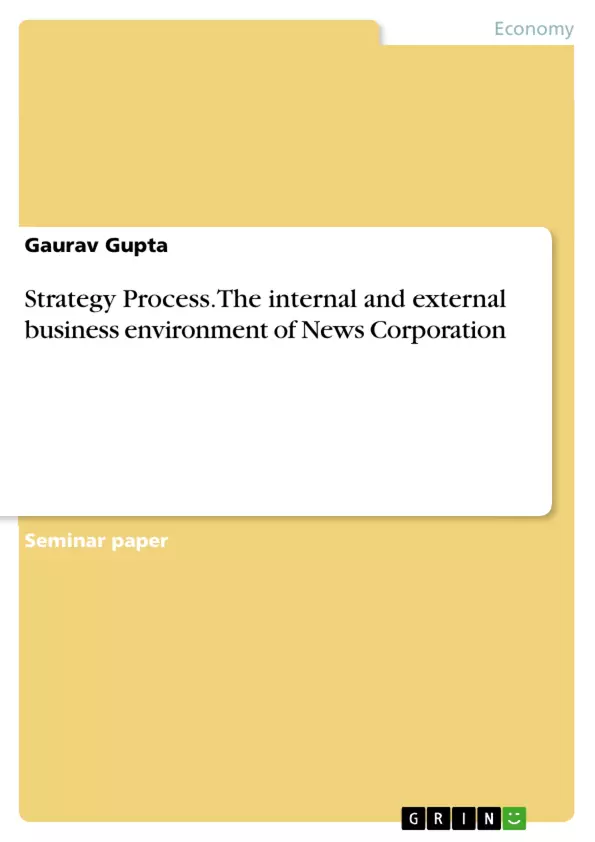News Corporation is one of the largest media companies in the world. In this paper, the current strategic position of this company is analysed, and the influences of the changes in the business environment, on this company, have been determined. The analysis of the internal and external business environment of the global media industry has been done. The analysis has revealed that the key strategic aspects facing this company are the change in the attitudes of the consumers with regard to the increase in their awareness towards socially responsible business activities, shift in popularity from the traditional media channels of newspapers, magazines and television to the internet, the entry of traditional non media companies into the industry, and change in the conventional ways of doing business. News Corporation needs to amend its strategy towards incorporating these changes.
Inhaltsverzeichnis (Table of Contents)
- Abstract
- Introduction
- Environment and Strategic Position
- The PEST method
- Influence of Macroenvironment on the Microenvironment
- Porter's five forces model
- Value chain model
- Company Selected
- Current Strategic Position of News Corporation
- PEST analysis
- Porter's Five Forces analysis of global media industry
- Porter's five forces analysis
- Value Chain
- SWOT analysis
- Changing Business Environment
Zielsetzung und Themenschwerpunkte (Objectives and Key Themes)
This paper analyzes the current strategic position of News Corporation, one of the world's largest media companies. It examines how changes in the business environment are affecting the company and determines key strategic aspects facing News Corporation. The analysis investigates the internal and external business environments of the global media industry.
- Impact of the changing business environment on News Corporation's strategic position
- Analysis of the internal and external business environments of the global media industry
- Key strategic aspects facing News Corporation, including shifting consumer attitudes, the rise of the internet, new entrants to the industry, and changing business practices
- Need for News Corporation to adapt its strategy to incorporate these changes
- Evaluation of News Corporation's strategies and recommendations for future actions
Zusammenfassung der Kapitel (Chapter Summaries)
- Abstract: Provides a brief overview of the paper, highlighting the analysis of News Corporation's strategic position and the impact of the changing business environment.
- Introduction: Introduces the concept of strategy and its importance for businesses, emphasizing the need to understand the company's current position and potential future trends. It outlines the analytical methods used in the paper, including PEST, Porter's five forces, and value chain analysis.
- Environment and Strategic Position: This section explores the importance of understanding the business environment for strategic decision-making. It introduces the PEST model for analyzing the macroenvironment and its impact on the microenvironment. The section also discusses Porter's five forces model for analyzing the competitive landscape within an industry.
- Company Selected: Presents a description of News Corporation, highlighting its size, operations, and key areas of business. It also mentions its founder, Rupert Murdoch, and the history of the company.
- Current Strategic Position of News Corporation: This chapter focuses on analyzing News Corporation's current strategic position by using PEST analysis, Porter's five forces model, and value chain analysis. It explores the changing business environment and its impact on the company.
Schlüsselwörter (Keywords)
The key concepts and terms in this paper include: strategic position, business environment, PEST analysis, Porter's five forces model, value chain analysis, global media industry, News Corporation, consumer attitudes, internet, new entrants, changing business practices, and strategy adaptation.
- Arbeit zitieren
- Gaurav Gupta (Autor:in), 2011, Strategy Process. The internal and external business environment of News Corporation, München, GRIN Verlag, https://www.grin.com/document/295369



